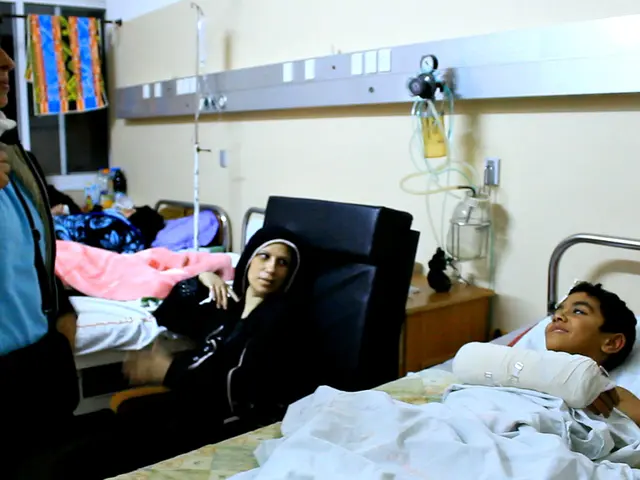PTSD and PTSS: Distinct Differences, Symptoms, and Treatment
Post-traumatic stress reactions, often referred to as PTSS, and post-traumatic stress disorder (PTSD) share some similarities yet differ in numerous aspects. While PTSS may be a precursor to PTSD, not everyone who experiences a traumatic event will develop PTSD.
PTSS, also known as acute stress disorder, is typically manifested immediately following a traumatic event, while PTSD develops at least a month afterward. Some individuals recover from the traumatic event, while others may progress to PTSD.
When comparing PTSS and PTSD symptoms, both conditions can cause anxiety, intrusive memories, sleep disturbances, and other related effects. However, the frequency, severity, and likelihood of symptoms in PTSS might be less severe than in PTSD. For instance, a study revealed that up to 20% of trauma survivors with PTSS reported severe symptoms, while as many as 40% experienced moderate symptoms, 30% mild symptoms, and 10% minimal symptoms.
The potential symptoms of PTSS and PTSD include:
- Intrusive memories of the traumatic event
- Distress when encountering reminders of the traumatic event
- Nightmares
- Difficulty sleeping
- Flashbacks, either visual, sensory, or emotional
- Dissociation
- Trouble remembering details of the event
- Hypervigilance
- Startle reactions
- Irritability or rapid temper
- Persistent negative emotions
- Difficulty experiencing positive emotions
- Difficulty concentrating
- Reduced interest in once-enjoyed activities
- Self-destructive or reckless behavior
- Avoidance of reminders of the event
To be diagnosed with PTSD, specific symptoms, including intrusive thoughts, emotional changes, reactivity and arousal, and avoidance, must be present for more than a month. PTSS, on the other hand, is often a temporary reactions to a recent stressor that may improve over time with support.
PTSD is not equivalent to PTSS, as PTSD typically has a later onset and presents with more severe symptoms. Despite this misconception, a study found that early intervention with CBT might help reduce symptoms in those with significant PTSS or ASD symptoms, suggesting that treating those with severe symptoms could aid those most at risk for PTSD.
Both PTSS and PTSD are caused by events perceived as dangerous or threatening. These events could be one-time incidents, ongoing experiences, or even indirect experiences, such as witnessing harm to others. Examples of potentially traumatic events include assault, war, severe illness or injury, childbirth, and living in an unsafe area. Some individuals may develop PTSS or PTSD, while others may not.
Treatment options for PTSD, which tend to focus on more extensive and severe symptoms, include:
- Therapy, such as trauma-focused CBT, exposure therapy, and EMDR
- Medication, such as SSRIs, antianxiety medication, and antidepressants
- Social support, including support groups and family and friend connections
Although early treatment of PTSS could potentially prevent PTSD, evidence remains scarce, and some studies favor early intervention for those with severe PTSS symptoms. Instructing mental health professionals to address severe symptoms as opposed to everyone might help reduce the risk of developing PTSD.
It's essential to seek help from a doctor or mental health professional for both PTSS and PTSD, especially if symptoms interfere with work or daily activities, lead to harmful behaviors, or involve thoughts of self-harm. Early intervention and support can help improve one's quality of life and enable recovery.
The mental health effects of PTSD can be profound, frequently leading to feelings of depression, anxiety, and emotional numbness. In some cases, physical therapy may be beneficial to manage physical symptoms related to PTSD, such as pain or impaired mobility.
Individuals who have experienced PTSS might find that their mental health can improve with physical therapy, as regular exercise and movement can help reduce symptoms of anxiety and improve sleep, both of which are often affected by PTSS.








